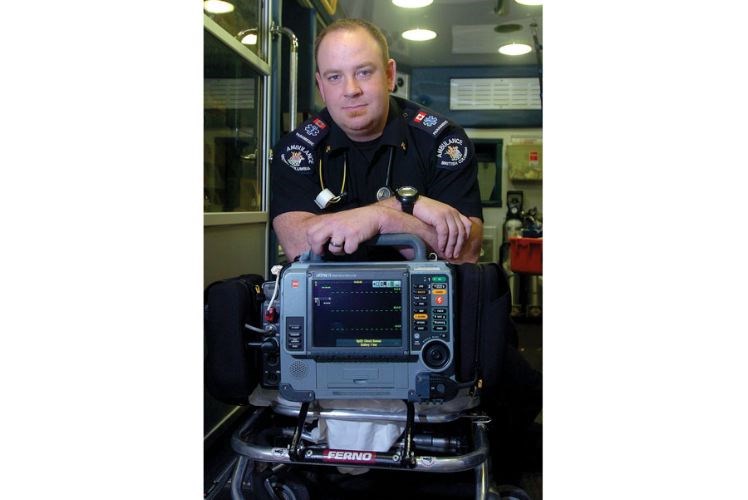Cardiac arrest victims in Prince George will have a better chance of surviving after a new automated external defibrillator is installed within the next two years.
The provincial government, the Heart and Stroke Foundation and the BC Ambulance Service are teaming up to install 450 new automated external defibrillators (AED) across the province, and Prince George will get at least one of those units.
"Cardiac arrest often strikes without any warning signs, often there are no symptoms - you just drop," Heart and Stroke Foundation director for advocacy and stakeholder relations Mark Collison said. "Time is critical. Without immediate treatment the victim will suffer brain damage after three minutes and rarely will someone survive past 12 minutes."
The Heart and Stroke Foundation is working with municipal groups to prioritize where the units should be deployed, with the first set to be rolled out in March. It's not yet known how many devices will be installed locally.
Prince George has a handful of defibrillators at community facilities already, including the downtown library branch and all arenas and pools thanks to fundraising from the Gentleman's Hockey League in partnership with the city. The new units will be placed at facilities like a recreation centres, outdoor sports fields, or senior's centres where the technology isn't currently available.
The survival rate for sudden cardiac arrests outside of hospitals in B.C is just five per cent, but if an AED is used within three minutes of the incident the survival rate increases to 75 per cent.
"That's pretty optimal to do it within three minutes, but if you can shock someone within five, six or seven minutes, they have a very good chance of surviving," Collison said. "If you don't shock them for every minute that passes you lose about 10 per cent of survival [rate]."
In order to reach the largest number of cardiac arrest victims, Collison would like to see even more units in place in addition to the current allotment.
"We really should try to make them as common as fire extinguishers," he said, adding it would be great to see a requirement in the building code as well as legislation clarifying that people using AEDs properly can't be held civilly liable.
The units cost $1,500 to $2,000 a piece and can remain in service for about seven years. The pads generally last three or four years and cost $50 each to replace, but each unit handed out in the current program will come with two sets of adult pads and one pediatric set. The battery should last for the life of the device but a replacement is about $100.
The provincial Ministry of Health and the Heart and Stroke Foundation are each chipping in $1 million to fund the program and the B.C. Ambulance Service will provide orientation at local facilities where the AEDs are installed. Paramedics will also provide follow-up after a device is used.
In addition to installing the devices, the groups are launching an awareness campaign to teach the public more about AEDs and how the should be used. When someone has a sudden cardiac arrest, bystanders are encouraged to first call 9-1-1, then begin CPR and call someone to get the nearest defibrillator. Collison stressed the machines can't do any harm as they will only shock a correctable heart rhythm.
All AEDs in the province will also soon be added to an electronic registry tied into the 9-1-1 service.
"If someone was to call from Prince George and they were close to a venue where a sudden cardiac arrest has occurred, the dispatcher will actually say, 'Ambulance on the way and did you know the rec centre has an AED - go get it,' " Collison explained.



